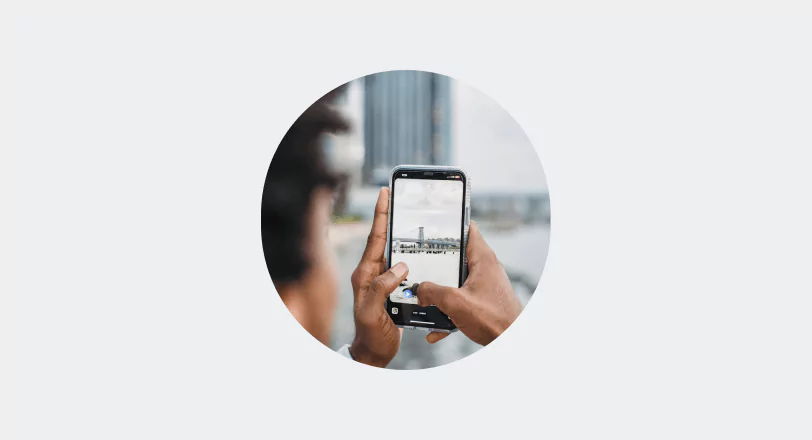Tourism marketing turns regular spots into awesome spots we can't wait to visit. It's all about making people want to travel.
That's why we love traveling. We love the views, the cultures, and the things to do.
Nowadays, with everyone online, tourism marketing uses the internet and social media to generate brand awareness and reach people everywhere.
We need more than cool pamphlets and websites. We need to really connect with the places we visit and make lasting memories.
So, let's talk more about tourism marketing and discover how it makes us crave adventures, dream big, and explore the world.
Here's a simple breakdown of the five main things to know about tourism marketing:
1. Promoting Places to Visit

Tourism marketing makes a place stand out by showing off its uniqueness. This means talking about the beautiful scenery, the history, and the special things you can see or do there. These include famous spots, outdoor fun, and tasty local food.
- Lesson? Do more than sell. Capture customers by telling a story that makes people really want to visit and experience everything the place has to offer.
2. Creating Awesome Travel Adventures

It's not just about telling people where to go. Tourism marketing is also about creating amazing travel experiences.
This includes special-themed tours, exciting adventure trips, deep dives into local culture, and relaxing wellness getaways.
A great experience appeals to all kinds of travelers, whether families, adventure seekers, culture vultures, or luxury travelers.
- Lesson? So when selling experiences, have a persona in mind, and target that persona's wants, needs, interests, and expectations in traveling - develop your marketing strategies around those needs.
3. Being Online

Now, if you're into tourism marketing, you need to be on the internet. That means having websites, social media pages, and online ads to get people's attention.
It's all about using smart online tactics like SEO (making sure your website shows up in search results), creating cool content, and running social media campaigns.
Using this method, tourism marketers can take digital platforms to connect with people who are interested in traveling and give them inspiration.
In Bali, for instance, a small, fancy hotel wants more guests to come stay there. To make their website show up for searches like "Bali beachfront hotel," "luxury places to stay in Bali," or "top beach resorts in Bali," they use SEO tricks. Basically, it's like having a big billboard on the busiest road.
- Lesson? It takes more than being online. With more competition out there, you need to stand out among the pool of search results. How? By leveraging SEO. Here's our go-to guide in Local SEO for tour operators.
4. Making a Good Impression

Tourism marketing is super important for making a place look great. It's all about showing potential visitors that the place is safe, welcoming, and real.
When a place has a good image, people want to come back again, tell their friends about it, and they really trust and love the place.
- Lesson? To build a strong, trusting brand, highlight what makes your travel business unique. Do you have a backstory? Tell them. Engage tourists by immersing them in the experience. Last thing, be consistent with your services. Nothing works better than a strong brand reputation.
5. Boosting the Economy

Tourism business really helps the economy. When tourism marketing brings more visitors and people to an area, they spend money on hotels, food, shopping, and fun activities.
Also, tourism creates jobs, helps local shops and services, and leads to better roads and facilities in places people visit.
- Lesson? Collaboration is key to tourism marketing. So why not team up with local shops? Try partnering with souvenir shops, local cafes, hotels, and inns. Guests love discount coupons! Partnerships allow you to offer discounts while staying profitable.
Wrapping It Up
Tourism marketing is more than just showing off cool places. It's about telling stories and making places that people want to visit. Think of it like giving a place its own spotlight.
It's more than having a website or a social media page. You need to be smart online. Use SEO marketing techniques to ensure people find you when searching for a place to go. It's like putting up a big, bright sign online that says "Visit us!"

Making a place look good and safe is super important. If people love a place, they'll keep coming back and telling their friends about it. That's how you build a good reputation.
And guess what? All this helps the local economy too. When people visit, they spend money on hotels, food, and fun stuff. This means more jobs and better things in the area, like roads and shops.
So, in short, tourism marketing is all about making a place shine, getting people excited to visit, and helping the area grow. It's like being a storyteller, a guide, and a helper, all in one.
FAQ Section
1. How does social media influence tourism marketing?
Social media is a powerhouse in successful tourism marketing efforts. It's where destinations and travel businesses, including car rental services or local entertainment venues, can showcase what makes them unique.
By posting beautiful images, sharing stories from happy visitors, and offering special deals, social media platforms like Instagram and Facebook are perfect for generating brand awareness and attracting travelers.
For any tourism marketing strategy, engaging with your target audience on social media is key to turning potential customers into loyal customers.
2. What are effective marketing strategies for small businesses in the tourism industry?
Small businesses operating in the tourism sector can attract customers by crafting a strong digital marketing plan.
This includes creating engaging content marketing on their websites and social media, ensuring their site appears in search engine results (SEO), and using influencer marketing to gain credibility.
Collaboration with other local businesses or travel agents can be part of a smart promotion strategy.
Additionally, focusing on delivering an outstanding customer experience will turn your existing customers into your most valuable asset, prompting them to share online reviews and become repeat, loyal customers.
3. What current trends are shaping destination marketing?
Tourism marketing strategies today are increasingly shaped by sustainable tourism practices and authentic, local experiences. Destinations use digital marketing to target a specific location's unique culture or a particular heritage site.
Technologies like VR and AR are being integrated into the tourist experience for more engagement.
On the green side, there's a push for sustainable tourism, with particular destination marketing campaigns highlighting eco-friendly travel options and practices.
Personalization is also big, with data analytics helping to tailor marketing messages and create content that resonates with a particular destination's target market.





